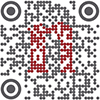|
|||||
|
|||||
|
Hello Nature readers, |
|||||

|
|||||
| Geometric patterns are known to affect developing organisms because of their ‘intrinsic’ geometry, related to the distances between points on the surface. Not so with roses. (bibi57/Getty) | |||||
A rose by any other geometryThe curled edges and pointed corners of rose petals form thanks to a geometric trick never before observed in nature. Using a combination of theoretical analysis, simulations and good old plastic sheets, physicists found that a type of mechanical feedback regulates the petals’ growth as they curl outwards. This feedback relies on 3D, or ‘extrinsic’ geometries, which push the edges of the petal into curls. The petal’s edge can’t form a single curl, so it forms multiple ones with cusps in between. As the petal continues to grow outwards, mechanical stresses at each cusp begin to turn what was a round edge into an angle. Nature | 4 min readReference: Science paper |
|||||
New method edits proteins in living cellsA new technique can directly edit proteins in living cells. The method relies on strings of amino acids called inteins, which can cut themselves out of proteins autonomously. So far, scientists have used inteins to splice unusual amino acids and even larger chains called polymers into proteins, and can observe how such additions affect a protein’s function and location. The process is “cut and paste”, says biochemist and study co-author George Burslem: inteins eject from a protein, leaving a gap. Then, the desired molecule to be spliced in — also bracketed by inteins — is ejected from a ‘donor’ protein and slots into its place. Nature | 5 min readReference: Science paper 1 & paper 2 |
|||||
Birdwatcher app reveals where birds thriveNorth American bird populations are declining most severely in areas where they should be thriving. Nevertheless, most species had pockets where their populations were growing. Researchers analysed 36 million birdwatchers’ observations shared using the Cornell Lab of Ornithology’s eBird app, alongside satellite data, to give unprecedented insights. “The locations where these species were thriving in the past, where the environments were really well suited to birds, are now the places where they are suffering the most,” says ecological statistician and co-author Alison Johnston. “The way I interpret this result is that it’s indicative of major changes in our world.” The Guardian | 4 min readReference: Science paper |
|||||
|
|||||
How India’s first satellite rewrote the rulesFifty years ago, India launched a satellite that redefined what a low-income country could achieve, writes science historian Pranav Sharma. The satellite, named Aryabhata after an ancient Indian astronomer, was launched with the help of the Soviet Union. “When the Kosmos-3M rocket roared to life, it carried not just circuitry but also the dreams of a nation not even 30 years free from colonial rule,” notes Sharma. India’s space programme would become the envy of the world for its ability to operate on a shoestring budget. Nature | 8 min read |
|||||
Futures: Romeo and the robotsTwo households, both alike in dignity, begin their feud anew in the latest short story for Nature’s Futures series. Nature | 6 min read |
|||||
Podcast: Will US science survive Trump 2.0?US president Donald Trump and his administration have gutted science agencies, terminated research programmes and cancelled billions of dollars in grants to universities. In this week’s episode, Nature reporter Jeff Tollefson joins the Nature Podcast to explore the long-term impacts for the United States and the world. (Nature | 14 min read) Nature Podcast | 27 min listenSubscribe to the Nature Podcast on Apple Podcasts, Spotify or YouTube Music, or use the RSS feed. |
|||||
Quote of the day“He said: ‘Let’s just write the academic paper version of this so that it’s not just ideas on Twitter, but peer-reviewed research. And that’ll put an end to it.’ It did not put an end to it.”In an oral history of the rise of ChatGPT and other large language models, Emily Bender recalls how she and fellow computational linguist Alexander Koller attempted to cap the debate over how to interpret these systems’ capabilities. (Quanta | 23 min read) |
|||||
|
|
|||||
|
|||||
|
|
|||||
Free newsletters from NatureWant more? Update your preferences to sign up to our other Nature Briefing newsletters:
|
|||||
Access Nature and 54 other Nature journals
Nature+ is our most affordable 30-day subscription, giving you online access to a wide range of specialist Nature Portfolio journals, including Nature. |
|||||
|
|||||
|
You received this newsletter because you subscribed with the email address: npsge3tx@nie.podam.pl Please add briefing@nature.com to your address book. Enjoying this newsletter? You can use this form to recommend it to a friend or colleague — thank you! Had enough? To unsubscribe from this Briefing, but keep receiving your other Nature Briefing newsletters, please update your subscription preferences. To stop all Nature Briefing emails forever, click here to remove your personal data from our system. Fancy a bit of a read? View our privacy policy. Forwarded by a friend? Get the Briefing straight to your inbox: subscribe for free. Want to master time management, protect your mental health and brush up on your skills? Sign up for our free short e-mail series for working scientists, Back to the lab. Get more from Nature: Register for free on nature.com to sign up for other newsletters specific to your field and email alerts from Nature Portfolio journals. Would you like to read the Briefing in other languages? 关注Nature Portfolio官方微信订阅号,每周二为您推送Nature Briefing精选中文内容——自然每周简报。 Nature Portfolio | The Springer Nature Campus, 4 Crinan Street, London, N1 9XW, United Kingdom Nature Portfolio, part of Springer Nature. |


